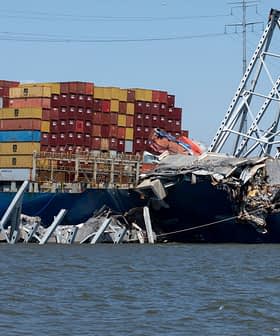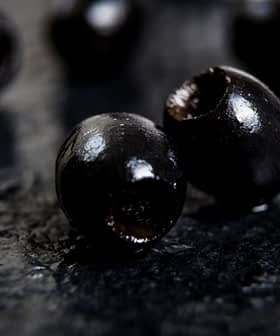California Olive Oil Industry Adopts Stricter Labeling Requirements
The Olive Oil Commission of California announced new rules that will apply to large producers, including adding best by dates to all olive oil labels and tightening the rules regarding how olive oil provenance is labeled.
 California Olive Ranch
California Olive RanchThe Olive Oil Commission of California has announced new mandatory labeling requirements for large producers in the state, which are meant to better inform consumers about the provenance and quality of the olive oils they are purchasing.
California producers with an output of 5,000 gallons or more per year will now need to provide “technical evidence” in order to support their self-selected best by date, add storage recommendations to their labels and adhere to stricter requirements when using phrases such as and similar to “Made in California” or “California Olive Oil.”
The more educated people become, the more they will read the labels. More information should demand higher prices.
The OOCC said that producers must use 100 percent California-grown olives in their oils in order to use labels that directly state or imply that the olive oil was made or produced in California.
To help differentiate these California-made oils from competitors, the OOCC also announced that it has become a member of the Buy California Marketing Agreement, which will allow producers who adhere to the above criteria to use the “CA GROWN” logo on their products.
See Also:California Olive Oil News“The recent measures adopted by the OOCC are an effort to further improve consumers’ buying experience by providing them with additional information about their decision to purchase California olive oil,” Brady Whitlow, the president of Corto Olive and chairman of the OOCC, said in a press release.
Richard Meisler, the co-owner of San Miguel Olive Farm, told Olive Oil Times that he welcomes most of the changes made by the OOCC and already includes much of the new information on his labels.
“The more educated people become, the more they will read the labels,” he said. “More information should demand higher prices.”
Meisler, who produces extra virgin olive oils made entirely from olives grown on his Central Coast estate, added that the new labeling requirements regarding provenance were important for marketing locally-produced olive oils.
Under the new OOCC requirements, olive oil labels that mention a specific region of California must have 85 percent of the olives used to produce the oil grown in that region. Additionally, labels that mention a specific estate must have 100 percent of their olives grown on that estate and the producer of the oil must own or control the estate.
“We have Central Coast on our labels,” Meisler said. “Estate will be on my label for this coming harvest.”
The one part of these new standards that Meisler disagrees with is that smaller producers do not need to follow the same standards.
“[These new requirements] are geared for the 5,000-gallon or more producers,” he said. “There are many that do not produce this quantity. I believe that they too should be under the same guidelines.”
“[It] may cost a little more for the producer, but healthful products are very important,” Meisler added.
Malcolm Bond, the co-owner of Bondolio, also agrees with most of the new labeling rules. He told Olive Oil Times that he expects the new provenance rules will help him better promote his brand.
“I agree, if you are saying your oil is ‘California Olive Oil,’ it must contain 100 percent California olives,” Bond said. “Especially on estate-grown, I feel it must be 100 percent estate grown. I do believe it will help our brand.”
However, Bond said that he disagrees with the new rules pertaining to adding best-by dates to the labels. He cited confusion among fellow growers about how to determine the best-by date and said that he prefers to use the harvest date.
“I am hearing some people are going to use one year from harvest date and others are going to use 18 months,” he said. “We have always used on our bottles the harvest date.”
The OOCC said the new requirements surrounding best-by dates are meant to better inform customers how long an extra virgin olive oil maintains its quality standards when stored properly. According to the commission, guidance documents have been provided to producers to help accurately determine the best shelf life.
“The commission allows producers to choose a ‘best by’ method to estimate shelf life from among several methods that were peer-reviewed in the global scientific literature,” Dan Flynn, the executive director of the UC Davis Olive Center, told Olive Oil Times.
The Olive Center evaluated all the measures that are provided in the guidance documents for the OOCC in a recent report.
“California’s ‘best by’ assurance sets a standard that could become a model internationally,” Flynn concluded.








